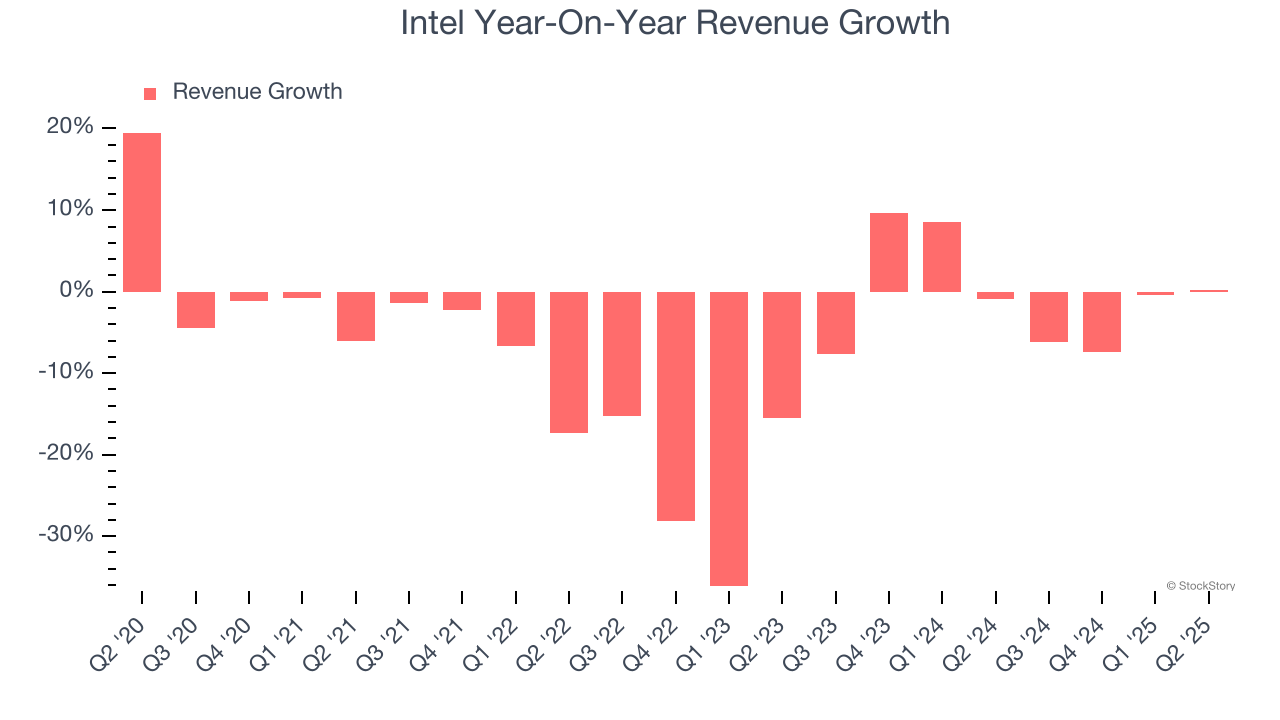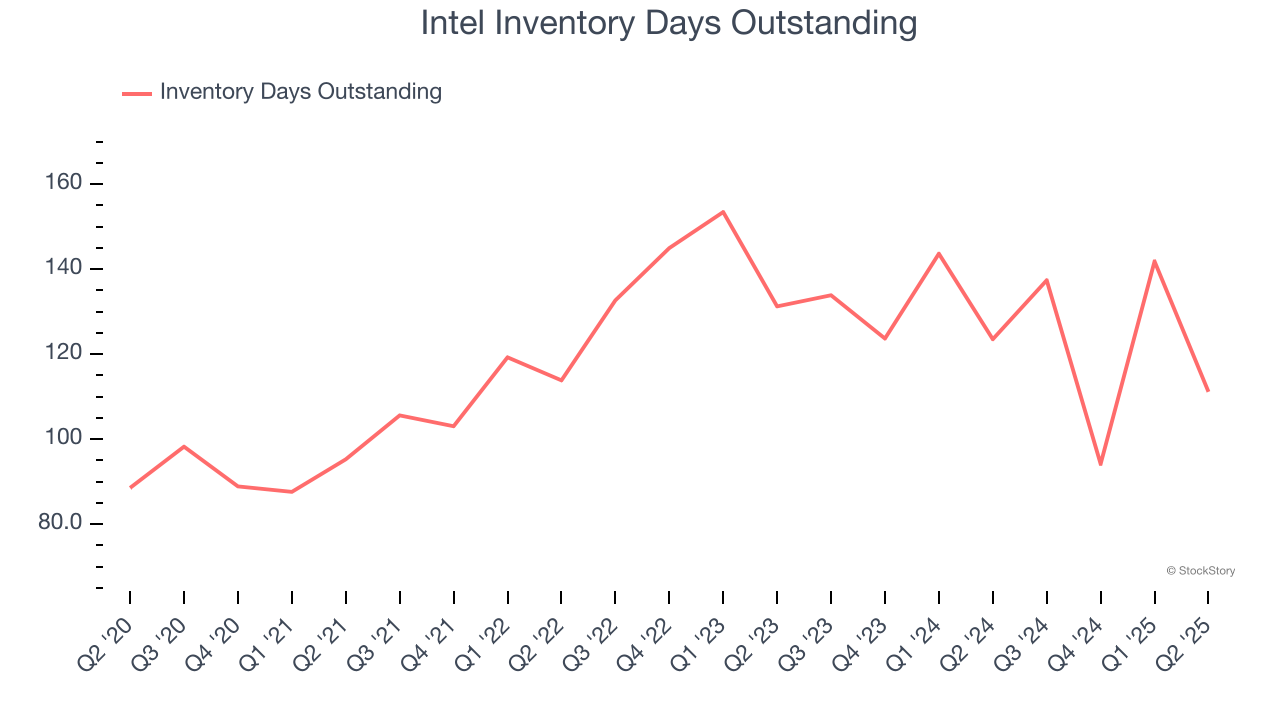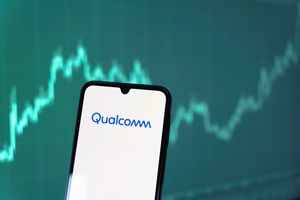
Computer processor maker Intel (NASDAQ: INTC) reported Q2 CY2025 results topping the market’s revenue expectations, but sales were flat year on year at $12.86 billion. On top of that, next quarter’s revenue guidance ($13.1 billion at the midpoint) was surprisingly good and 4.1% above what analysts were expecting. Its non-GAAP loss of $0.10 per share was significantly below analysts’ consensus estimates.
Is now the time to buy Intel? Find out by accessing our full research report, it’s free.
Intel (INTC) Q2 CY2025 Highlights:
- Revenue: $12.86 billion vs analyst estimates of $11.93 billion (flat year on year, 7.8% beat)
- Adjusted EPS: -$0.10 vs analyst estimates of $0.01 (significant miss)
- Adjusted Operating Income: -$503 million vs analyst estimates of $99.92 million (-3.9% margin, significant miss)
- Revenue Guidance for Q3 CY2025 is $13.1 billion at the midpoint, above analyst estimates of $12.59 billion
- Adjusted EPS guidance for Q3 CY2025 is $0 at the midpoint, below analyst estimates of $0.04
- Operating Margin: -24.7%, down from -15.3% in the same quarter last year
- Free Cash Flow was -$1.05 billion, down from $8.16 billion in the same quarter last year
- Inventory Days Outstanding: 111, down from 142 in the previous quarter
- Market Capitalization: $102.5 billion
“Our operating performance demonstrates the initial progress we are making to improve our execution and drive greater efficiency,” said Lip-Bu Tan, Intel CEO.
Company Overview
Inventor of the x86 processor that powered decades of technological innovation in PCs, data centers, and numerous other markets, Intel (NASDAQ: INTC) is a leading manufacturer of computer processors and graphics chips.
Revenue Growth
A company’s long-term sales performance is one signal of its overall quality. Any business can experience short-term success, but top-performing ones enjoy sustained growth for years. Over the last five years, Intel’s demand was weak and its revenue declined by 7.6% per year. This wasn’t a great result and suggests it’s a low quality business. Semiconductors are a cyclical industry, and long-term investors should be prepared for periods of high growth followed by periods of revenue contractions.

Long-term growth is the most important, but short-term results matter for semiconductors because the rapid pace of technological innovation (Moore's Law) could make yesterday's hit product obsolete today. Intel’s revenue over the last two years was flat, sugggesting its demand was weak but stabilized after its initial drop. 
This quarter, Intel’s $12.86 billion of revenue was flat year on year but beat Wall Street’s estimates by 7.8%. Adding to the positive news, Intel’s flat sales marked an inflection from its revenue decline last quarter, news that will likely give some shareholders hope. Company management is currently guiding for a 1.4% year-on-year decline in sales next quarter.
Looking further ahead, sell-side analysts expect revenue to decline by 3.8% over the next 12 months, a slight deceleration versus the last two years. This projection is underwhelming and implies its products and services will see some demand headwinds.
Software is eating the world and there is virtually no industry left that has been untouched by it. That drives increasing demand for tools helping software developers do their jobs, whether it be monitoring critical cloud infrastructure, integrating audio and video functionality, or ensuring smooth content streaming. Click here to access a free report on our 3 favorite stocks to play this generational megatrend.
Product Demand & Outstanding Inventory
Days Inventory Outstanding (DIO) is an important metric for chipmakers, as it reflects a business’ capital intensity and the cyclical nature of semiconductor supply and demand. In a tight supply environment, inventories tend to be stable, allowing chipmakers to exert pricing power. Steadily increasing DIO can be a warning sign that demand is weak, and if inventories continue to rise, the company may have to downsize production.
This quarter, Intel’s DIO came in at 111, which is 8 days below its five-year average. At the moment, these numbers show no indication of an excessive inventory buildup.

Key Takeaways from Intel’s Q2 Results
We were impressed by Intel’s strong improvement in inventory levels, which contributed to its revenue beat and top-line guidance for next quarter that clocked in above expectations. On the other hand, its adjusted operating income and EPS fell short of Wall Street’s estimates as did its quarterly EPS guidance. Zooming out, we think this was a mixed quarter. The stock traded up 2.4% to $23.15 immediately after reporting.
So should you invest in Intel right now? The latest quarter does matter, but not nearly as much as longer-term fundamentals and valuation, when deciding if the stock is a buy. We cover that in our actionable full research report which you can read here, it’s free.





